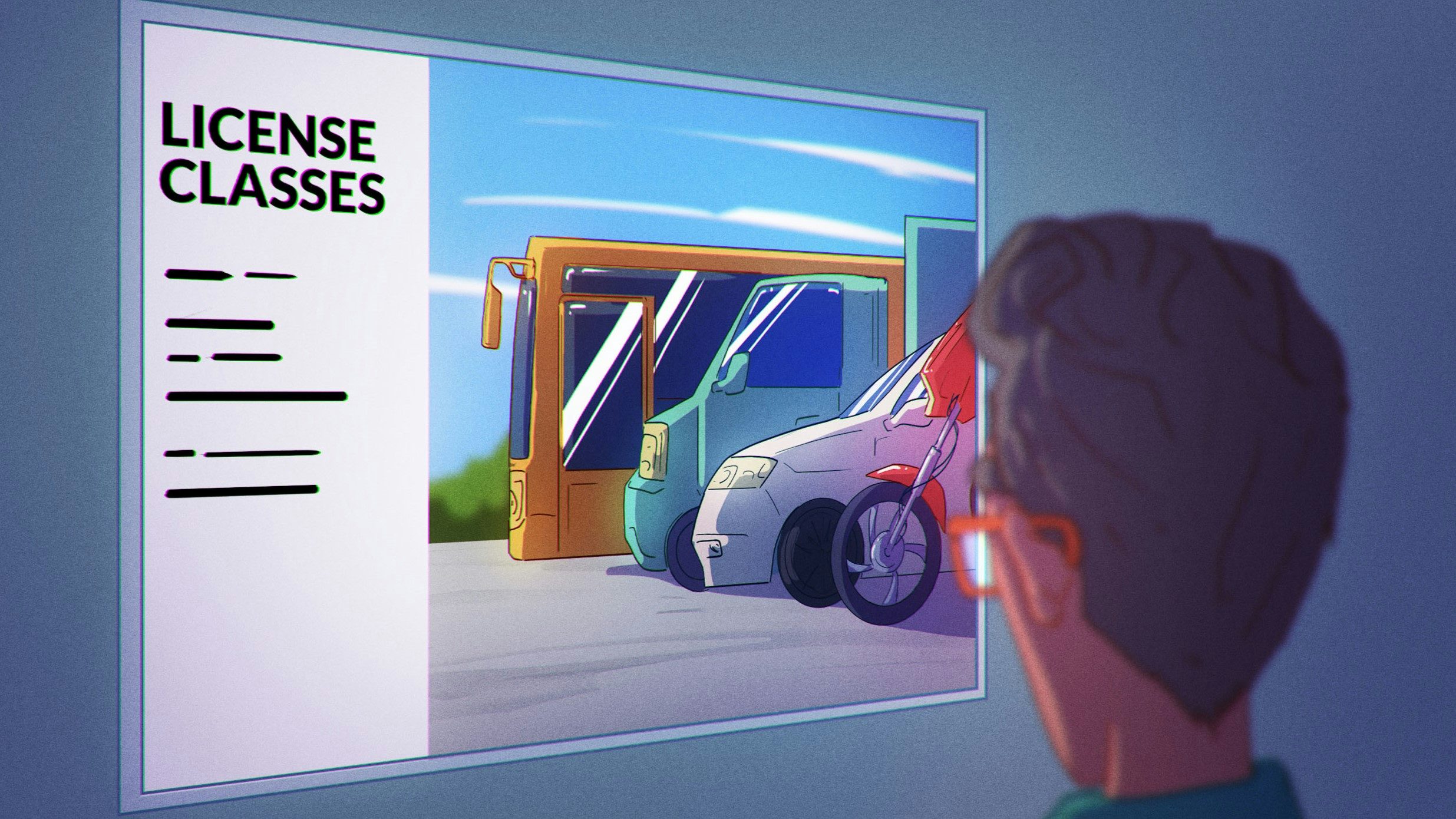
How to Start a Driving School Business
The key to any successful business is offering something people need. With a driving school, you’ll have built-in demand in almost any medium-sized city. But before you open your driving school, there are some important details to sort out.
This guide will walk you through how to open a driving school business – covering the initial steps, advertising tips, how to stand out from the competition, and using tools that boost your profits.
1. Understand State Licensing Requirements
When starting up, the first thing you need to understand is state regulations. Every state has different regulations for driving schools. You’ll be asked to complete a series of forms and prove that you have all elements needed to fulfill the state’s licensing requirements.
These requirements may include:
- Establishing a physical location that meets state regulations.
- Completing written, road, or other tests as well as certain instruction.
- Posting surety bonds with the state.
- Passing a criminal background screening.
- Providing insurance on all vehicles.
- Creating a record-keeping system for required contracts and other paperwork.
The best way to find these is simply to go to your DMV’s website and search for the relevant forms, or use Google. To quickly locate the forms on Google, try searching for:
[Your State Name] driving school application forms site:.gov.
2. Research the Area You Live In So You Know What to Expect
Although students become eligible for driving permits every day in every city, you’ll firstly want to understand exactly how many students will be filling the pipeline in the next several years, and secondly how many other driving schools are already serving your area.
- Research both high school and elementary school populations in your community. Look at population trends to see if the area is growing.
- Find out what kinds of driving instruction are already available. Check out school-based programs and competing driving schools, paying attention to their prices, online reviews, and locations.
Your goal is to create an offer that stands out. You can compete on price, but it’s often better to compete on quality. When you offer top-notch services, you’ll build a strong reputation, which means more happy students and less need to rely on low pricing.
After this research, you should be able to answer the following questions:
- How much demand is there?
- Are there competitors? How many?
- Is there room for an additional school?
- What is working for other driving schools? What is not working?
- Is there anything you can do to differentiate your business and create demand?
If you take the time to do this research, you will already be way ahead of most other schools.
3. Choose a Suitable Location
Location really matters. If thousands of people drive by each day and can see your sign, that’s basically free advertising. Being close to high schools or shopping centers can also work in your favor.
Make sure you’re not walking into a super-crowded market. Also, check any rules about classroom sizes, such as state requirements that dictate minimum classroom dimensions, and make sure your chosen space meets or exceeds these standards.
When it comes to leasing, think carefully about contract flexibility. Don’t jump into long contracts. If you change your mind after a year, you’ll be stuck. It’s usually smarter to start with a short-term lease, especially while you figure out if running a driving school is your thing. A good broker can be a lifesaver in sorting out all the lease stuff and making sure you don’t sign anything that ties you down forever.
So, in short: Do your homework, pick a spot people can find easily, and keep your lease flexible. That way, if things go great, you can lock in a longer deal later. If not, you’re free to pack up and move on.
4. Understand How to Stand Out Among Competitors
We can’t stress this enough; how you position your driving school is extremely important. Do not make this decision lightly. Your goal is to create an offer that stands out. You can compete on price, quality, or both. For example, when you offer great service, you build a good reputation. In the long run, this means you don’t have to compete on price as much to get business.
- Evaluate your strengths and list out what you could do best. Whether it’s excellent customer service, advanced technology, or unique training methods. Then use these as the foundation of your offer.
- Take note of what other driving schools in your area are doing and identify gaps in their service or quality that you can fill.
- Decide on your value proposition. Choose whether you’ll compete on price, quality, or a combination. Write down the benefits of your approach and how it will make you stand out.
- Focus on consistency. Ensure that every part of your service, from customer interactions to the quality of instruction, is consistent. By being consistent, you’ll attract the type of customers you want. For example, a segment of the market are often willing to pay extra for better services. If you want to draw in those high-quality clients, you need to shape your entire operation and offering to appeal to them.
Zutobi Instructor is designed to streamline your driving school operations by automating administrative tasks while offering a top-notch in-class and online curriculum. Stand out from competitors with a modern learning experience that students love.
5. Create a Financial Plan
In order to ensure that your driving school is viable for the long term, you’ll need to create a comprehensive financial plan. Your accountant may be able to help you, but start by pulling together a list of your initial and ongoing expenses. They may include:
- Rent or mortgage on your physical building.
- Utilities.
- Lease payments on your driving school vehicles.
- Fuel.
- Insurance.
- Marketing expenses.
- Wages and salaries of driving instructors and administrative staff.
- Taxes.
At this point, you’ll need to determine if you have enough cash reserves to begin your driving school or if you need to seek investors, a business loan, or other outside financial assistance. If you do need additional funds, you’ll most likely be asked to submit a formal business plan.
It’s always a good idea to create a business plan with a strategy, goals, and time frame. You’ll need to continually track your finances, many new driving businesses do so using a simple excel spreadsheet.
6. Decide on Curriculum
Once all of the business steps are underway, you’ll need to create a knowledge base, courses, and overall curriculum that will encompass the scope you’ve chosen to undertake. Check to see if your state has a mandatory curriculum and use that as a launching point.
If you’re offering an online or classroom course, be sure to incorporate the material that students will face on the knowledge test. If you are only offering behind-the-wheel, plan your driving sequence to practice and tackle the most important and challenging aspects of the road test. Some states do not allow practicing on the actual road test route; be sure to check local rules.
7. Decide What Services to Offer
Once you have your expenses outlined and understand how much your competition is charging for similar services, you’ll need to create a price list & services for your driving school. Many schools will offer a variety of services, such as:
- Road testing
- Classroom instruction
- Behind-the-wheel instruction
- Package deals
Also, consider where and when lessons will be held, if you will pick up and drop off students, and whether you’ll allow the instruction vehicles to be used for the actual road test. Check to see if your state allows your school to conduct the road test.
8. Use Management Tools to Cut Overhead
When you have all of these things in place, it’s time to start teaching. If you’re a new school, chances are that you’ll do most of the teaching yourself. A huge part of an instructor’s day is student management and administrative tasks, and most instructors don’t even realize how much time they’re spending on these tasks! Remember, each hour spent on administration is an hour that could have been spent in the car with a student.
As a driving school owner, you’ll want to reduce student administration to a minimum so you, and your employees, can focus on what’s important – bringing in money.
Check out our in-depth review of management tools here.
9. Spread the Word
After you receive your license to open a driving school, you’ll want to create an advertising, SEO, and marketing strategy. In this day and age, having an online presence will be critical to letting potential students know about a new school opening up.
Here are some things you can try:
- Website. Be sure to select a name for business and secure a domain name for your website. Make it easy to spell and remember. You can seek professional help in creating a website or use one of the many do-it-yourself tools to help you create one.
- SEO. Now that you have your website, make sure it is optimized for SEO. The easiest thing you can do is to create a blog where you occasionally write about relevant driving topics and answer common student questions. You’ll also need to make sure that Google understands what you do and where you are based by clearly stating that information on you website. If you want to know more about SEO and how it can benefit you, we recommend that you read this guide.
- Social Media. Create social media accounts for your business to communicate with interested students and parents. Be sure to link to useful information as well as have details on how to contact your school.
- School Connections. In some cities, you may be able to advertise through the high schools themselves. Contact the office to find out more about what is allowed and how to serve their students.
- Local Media. Send news releases about your driving school to the local newspapers, radio and television stations. They may have an area dedicated on their websites for community announcements.
- Advertising. If you have the resources to do some targeted advertising in your community, you may want pay to help get the word out.
- Business Cards. Be sure to have business cards printed so they can be distributed in areas where potential students may be found.
- Instructor Cars. Most states require that vehicles used for behind-the-wheel training are clearly labeled with the name of the school, but this is a great way to advertise while your students are on the road.
- Swag. Consider ordering car magnets that warn other drivers that a student is learning to drive and include your driving school’s name. Hand these out to learners to use on their personal vehicles.
- Community Involvement. Another great way to get the word out is to participate in community work, church festivals, or conferences where you can hand out safe driving tips, talk with people, and give out advertising freebies. You may even consider joining the local Chamber of Commerce or offer to give driving safety talks through community venues as well.
Selecting a Business Structure
Just like establishing any other business, you’ll have to select a structure for your driving school for legal and tax purposes. Be sure to engage an attorney and accountant before finalizing your decision. Typical options include:
- Sole Proprietorship: Usually used for very simple businesses, but owners can be liable for business problems.
- Limited Liability Corporation: This is a middle ground, allowing you to avoid some personal liability without the complexity of establishing a corporation. Read more here.
- Corporation: As the most complicated business structure, a corporation selection will offer the greatest protection against liability.
Foster Long Term Success for Your Driving School
The best way to succeed in a community is to provide excellent services at reasonable prices. While you cannot guarantee that students will pass their tests simply by enrolling in your school, you can publicize your pass rate. Be sure you provide high quality instruction, and then share your successes in helping to prepare safe, responsible drivers through your future advertising, marketing, and online communications.
Keep in touch with former students through an annual update or even a personal birthday wish. If they remember having a good experience with your organization, they will be more likely to refer to your school when asked by friends and family.
Like all businesses today, your school will begin generating online reviews. Be sure to stay on top of the main review platforms, responding to both positive and negative feedback in a professional manner. If a student has a reasonable complaint, do your best to resolve the issue and use this information to improve future services. Don’t forget to request reviews on major platforms from your happy students. Many just need to be asked.
Finally, be sure to stay on top of any state-required record keeping and organizational requirements. Treat your driving school like the business it is. Take care of your employees and your customers by providing an excellent product and caring service. If you consistently do those basic things, your driving school will develop a positive reputation and be an important member of your local community.

Recommended articles
Ace your DMV test, guaranteed
Want to Be the Top School in Your Area?
- Simple & automated admin
- More time for teaching
- #1 learning materials for students


